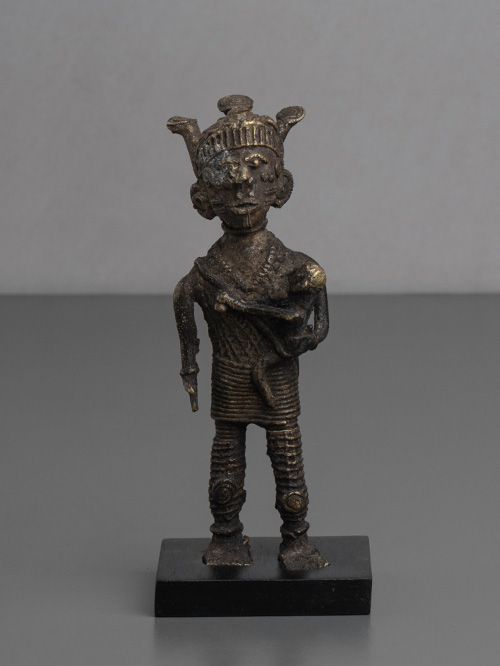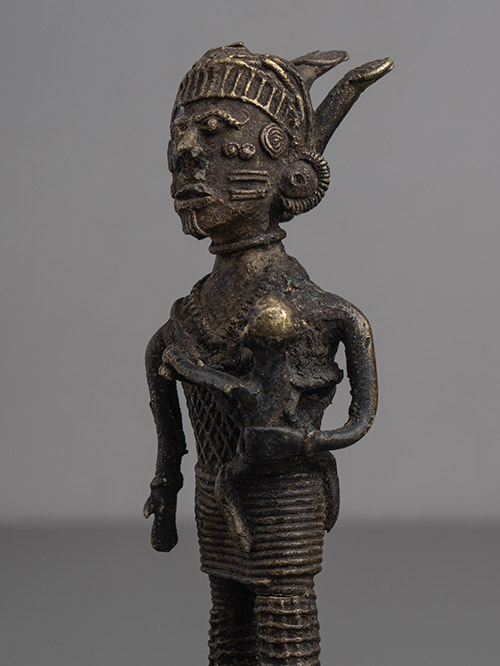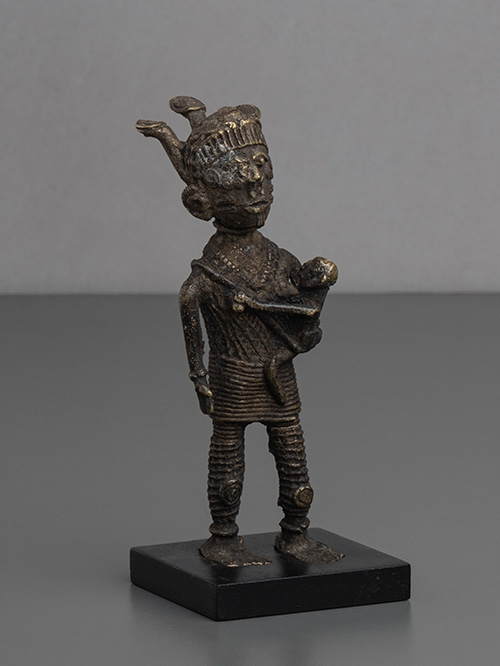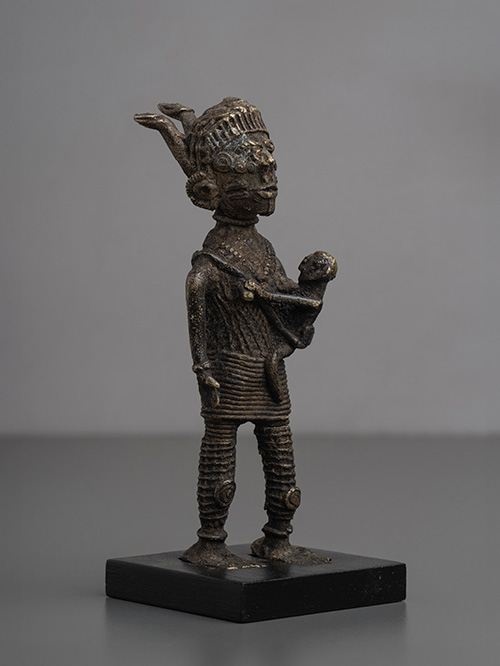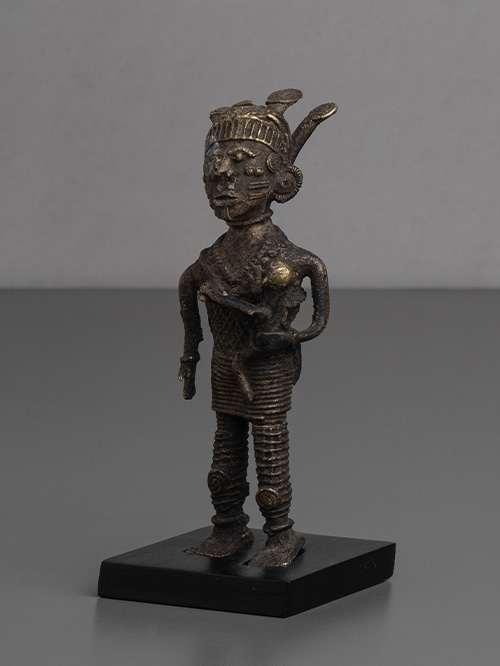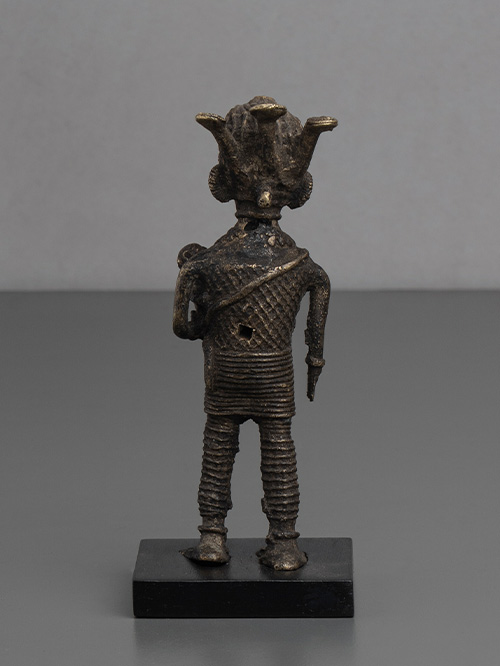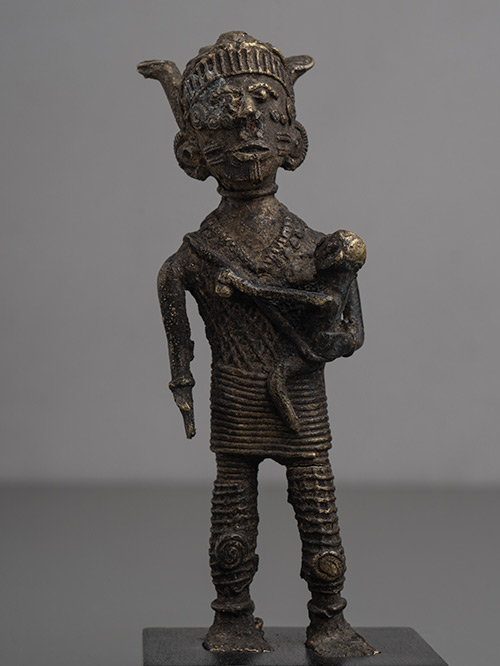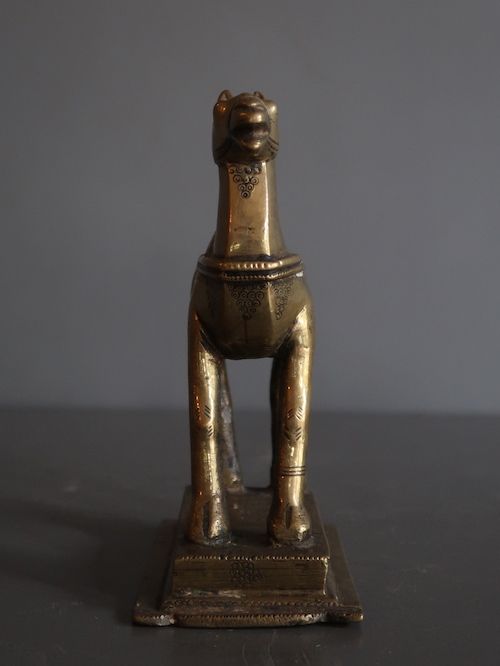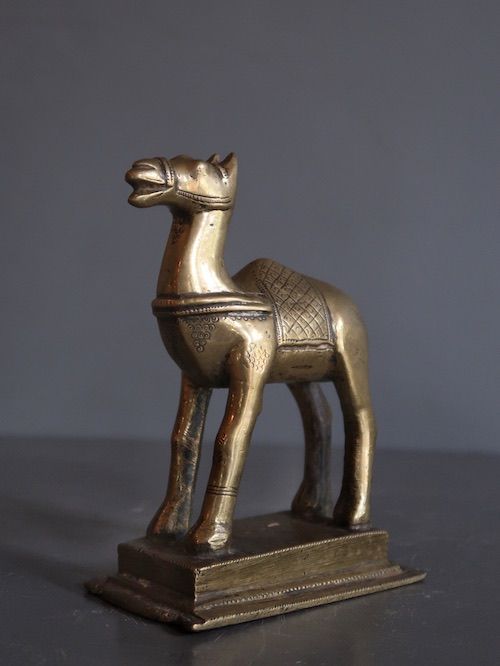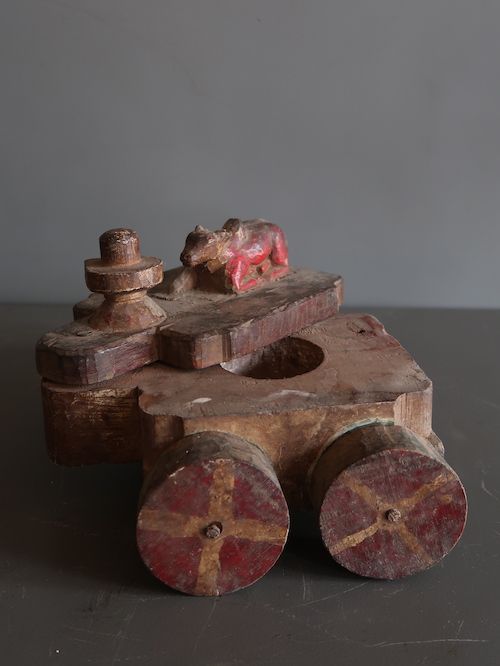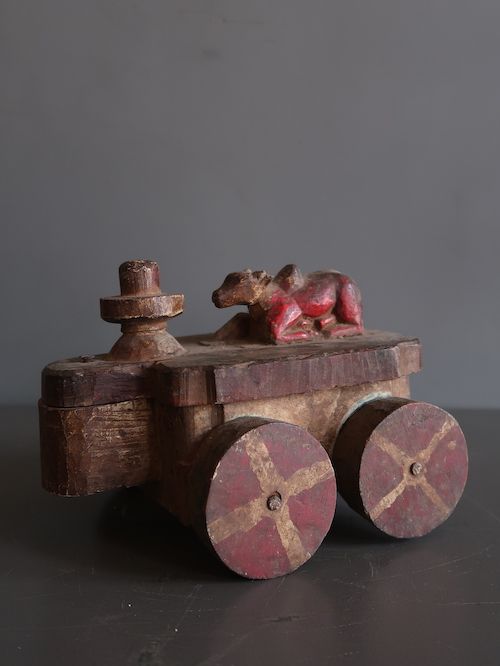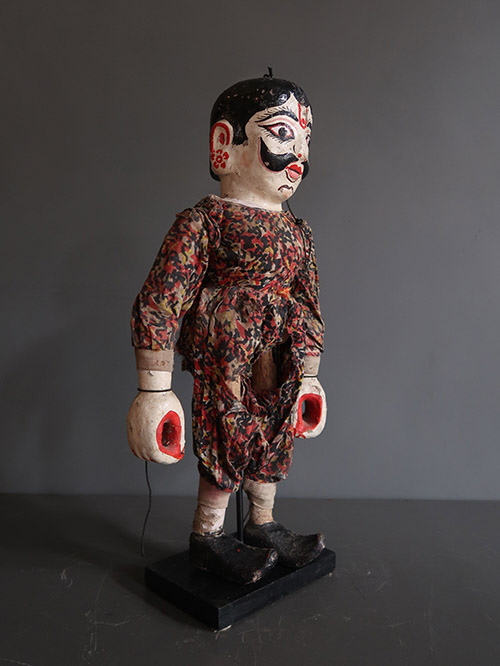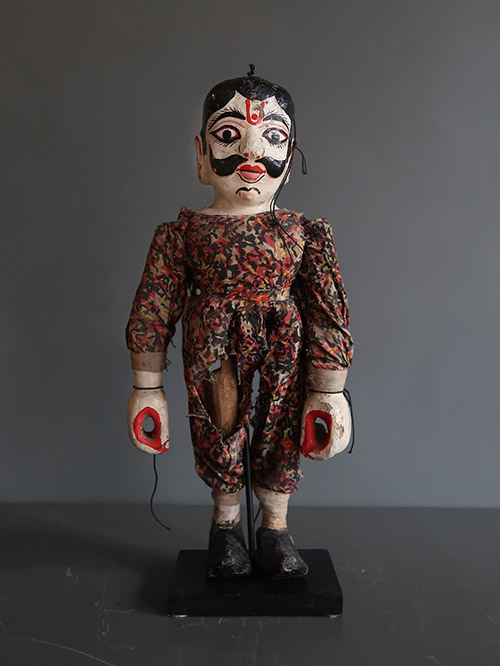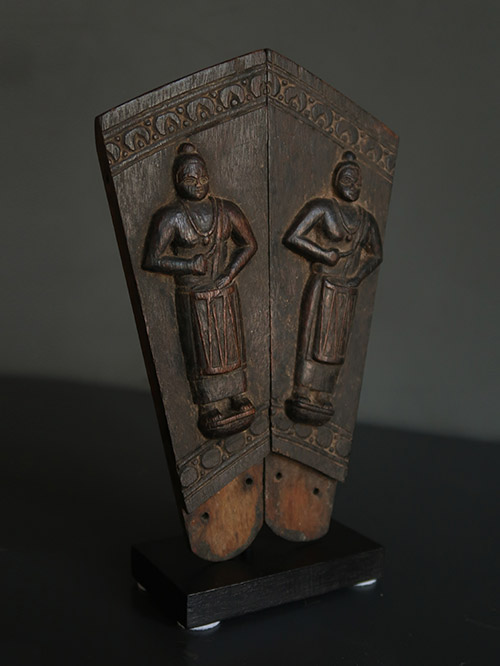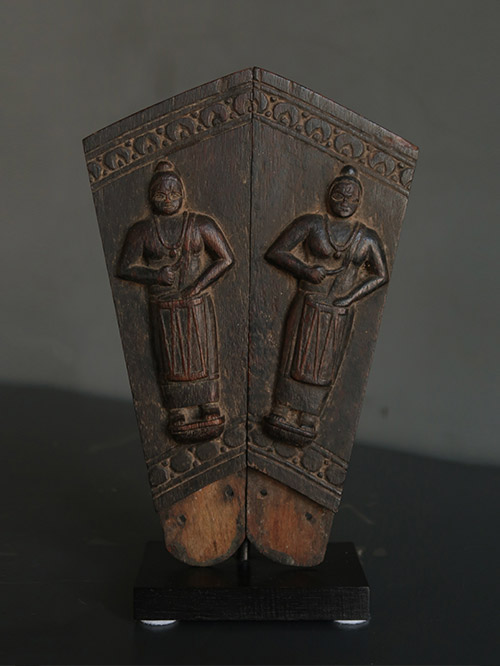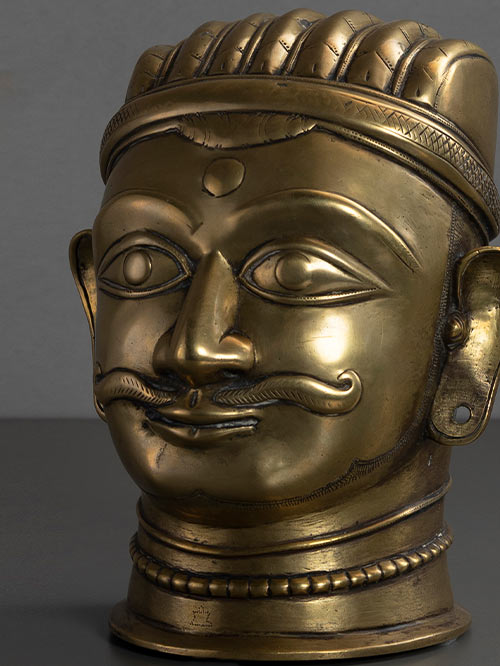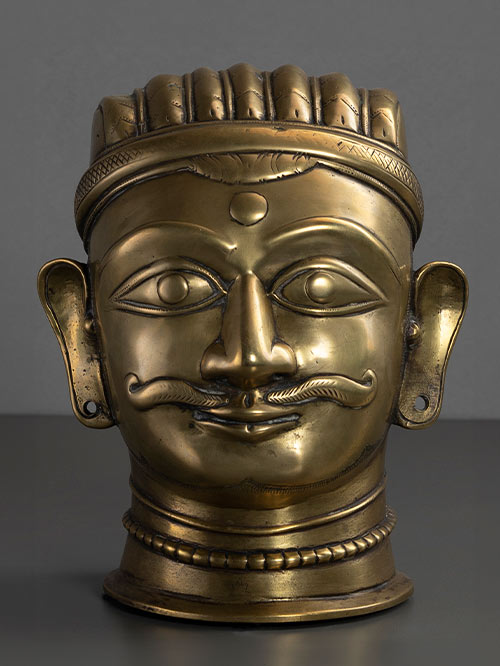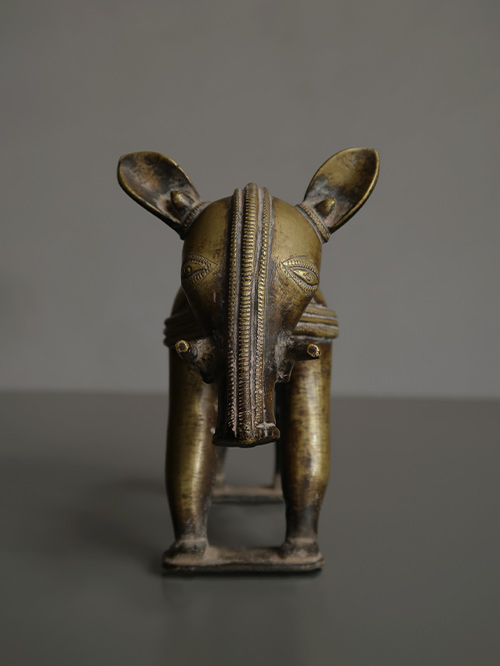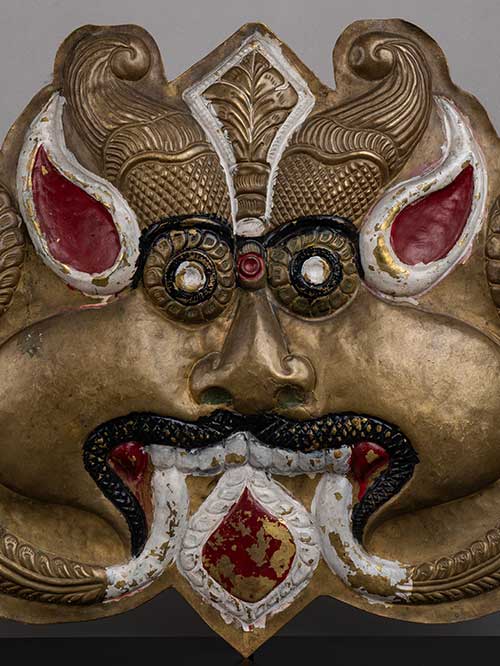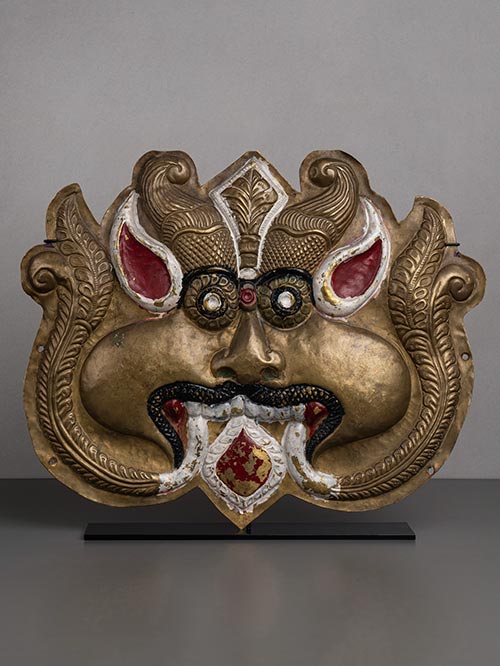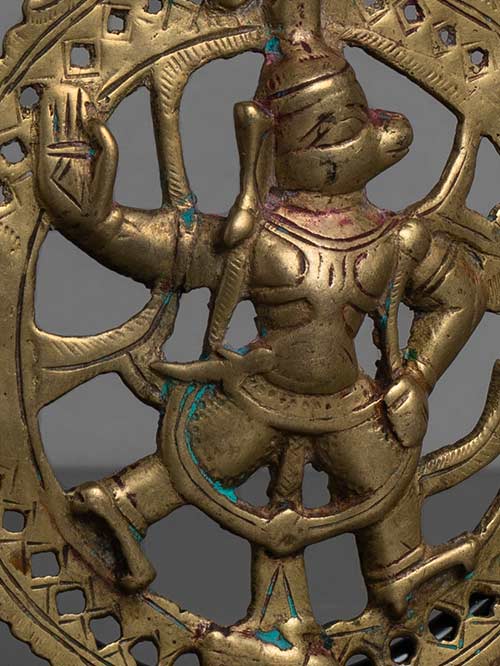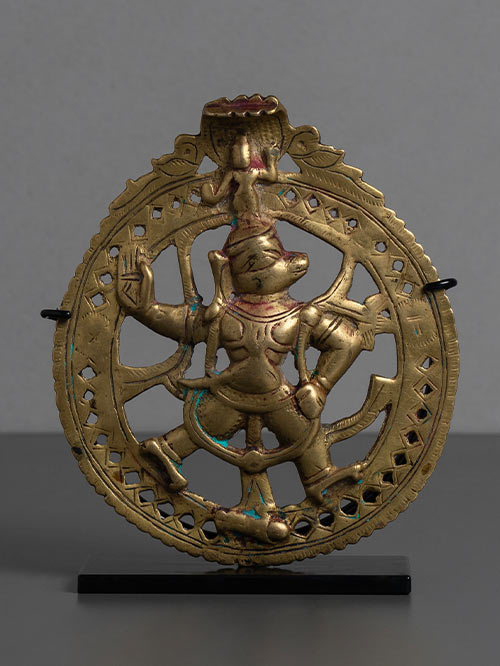Orissa (Kondh Tribe)
bronze
Within the hill and forest-dwelling Kondh tribes of India, figurative bronze sculptures of humans served as memorials to ancestors. Female figures were often depicted carrying children or with water vessels on their heads, while men were fashioned as musicians, hunters, or farmers. These sculptures were kept in baskets (burka) in adjacent rooms of the house (kodongijo) for use in rituals involving ancestor veneration and memory.
The Kondh tribes, indigenous to eastern India, possess a rich cultural heritage deeply rooted in their close connection to the land. Primarily agrarian, they cultivate crops like millet and rice while engaging in hunting and gathering. The Kondh people believe in building a vast community with the deceased, viewing death as a transition from one form of life to another invisible one. The involvement of ancestor figures in daily life expresses the clan’s desire for continuity, harmony, and solidarity between the material and immaterial worlds. As such, these figures were utilized in all social and religious activities.
Size (cms): 14(H) x 6(W) x 6(D)
Size (inches): 5.5(H) x 2.5(W) x 2.5(D)

